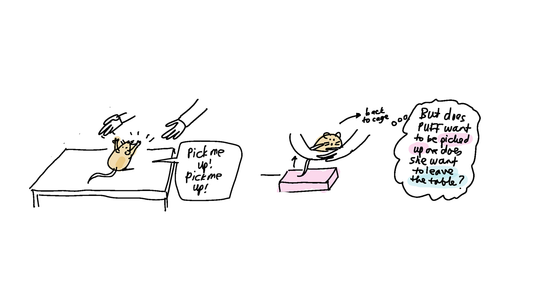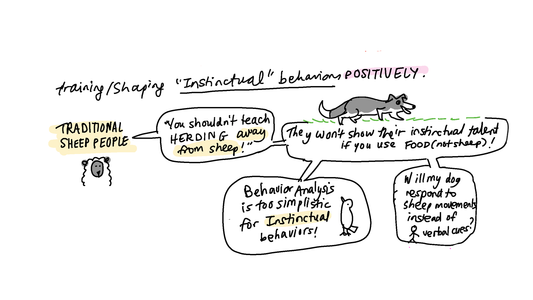Notes: Alison Skipper on Why History Matters (origins 2025 conference)
Lili ChinThese are my notes from Dr. Alison Skipper's presentation at the Origins 2025 conference.
Dr Skipper's interview on the FDC podcast about the history of UK breed registries is also highly recommended. In fact, her work was inspirational to parts of my book.
Why History Matters: Understanding the past to improve the future of pedigree dog breeding.
Everyone wants a dog of good breeding; a dog who is bred under ethical conditions; a well-bred dog, but..
1. ideas about what is good/ethical change over time. For example,
- back in the 1930s, you could hire out a "foster mother" (whose own pups were killed) whose milk could be used for your own "more valuable" pups. This was a legitimate business.
- back then, puppies born deaf were euthanized. Today, deaf pups can become family pets.
2. ideas about what is good/ethical also vary by country.
- Cropping and docking have been forbidden in the UK & Europe for a long time. Normal and acceptable in the USA
- Ideas around neutering dogs, and when is the best time to do this keep changing based on the latest science in different countries.
Skipper: It is important we take new scientific information into consideration but many issues in the dog breeding world are not about the science. They are about human behavior and human customs.
Human customs and closed breed registers (UK)
What is a PEDIGREE DOG (Purebred dog)?
1. A breed standard 2. A (Closed) Breed register/gene pool/stud book
Closed breed registries cause problems, but the pushback from breeders is: "But it has always been like this! " History/Tradition is used to justify keeping things the same. However, much of what we know is myth.
Breed registers have not always been closed.
- PURE BREEDING has changed meaning since the dog show world started. In the beginning, dog shows were modelled on horse shows. "Pure breeding" was thought of in terms of blood.
- "good blood" = a vague, broad, and flexible concept demonstrated by either the dog having traceable ancestors, successful ancestors, successful physical or mental features, or ancestors owned by famous people/aristocrats.
- Back then, it was believed that "good blood" can be concentrated by INBREEDING
- However, breeders also used OUTCROSSING (to other breeds) to get desired qualities or to regain (lost) qualities in their dogs.
- Breed registers were OPEN.
- Back then, the purpose of Kennel Gazette registers was to 1. keep track of which owners owned which dogs because many dogs had the same names 2. differentiate between registered or unregistered parents. Registered or not, this had no bearing on "good blood" or "good breeding."
- Skipper investigated breed records from the 1910s (Blegbie Pomeranians by Miss Reid-Powel) and saw that only 50% of her dogs (43 litters) were registered. Back then a larger % of parent dogs were unregistered; over time registrations increased.
- In the interwar years, MODERN 'PURE BREEDING' (eugenics) ideas from Mendel were seeping into agriculture and the Dog Fancy. People believed that the selective breeding of a population was a good thing back then!
- By 1950s, the % of NEW registered pomeranians had dropped dramatically. In 1971, the breed register closed. The point is that although OUTCROSSING had been culturally unacceptable for a long time, but it only became officially unacceptable more recently.
Skipper: The argument that breed registers have always been closed, and that this has always been essential to "good breeding" are myths. Not historically true. The reopening of breed registers more recently (UK Kennel Club) is an inspiration to change things.
Community Health Action (historical examples)
DISTEMPER used to kill 25% of all dogs.
- 1890s: vaccination as a cure was becoming more widespread
- 1922: The Field newspaper led research into distemper. This was a community funded campaign.
- 1929-1931: a distemper vaccine was launched by Wellcome and canine health has been transformed ever since.
CONGENITAL DEAFNESS in white bull terriers.
- Bull Terriers were very popular in colonial British India and pure white was the breed standard for dog shows. But white Bull Terriers were usually born deaf.
- Fanciers argued over whether it was acceptable to breed/show deaf pure white bull terriers (kill all deaf puppies?) Introduced patched bull terriers into the standard.
- Inspired by the distemper campaign, India's Bull Terrier breeders funded UK research into bull terrier congenital deafness.
- We now know that WHITE pigment is linked to deafness but the problem of how ethical it is to continue breeding/showing white dogs is still not solved today.
PROGRESSIVE RETINAL ATROPHY ("Night blindness") in Irish Setters.
- 1930s: Rainbridge noticed his Irish Setter going blind at a very young age. He spent years studying Irish Setters and found many others going blind.
- 1945: It was revealed that the source of recessive genes came from the 1920s Rheola kennel pedigree.
- GENETICS/HERIDITY was still a new and revolutionary concept at the time (when people still thought in terms of blood) so he had to educate breeders that by breeding from dogs with no copies of the recessive genes, the disease could be eradicated.
- A big % of the breed community came together to do test matings to build up a population of Irish Setters not affected by night-blindness.
- This was the very 1st breed register to be CLOSED - the purpose was to eliminate a disease; not for ideological reasons.
- By the 1990s, no Irish Setters had the disease; this led to more community projects with molecular genetics testing.
The Social Construction of Disease
Skipper: Any disease is a biological problem AND also how we understand that biological problem. How we understand diseases matter because it determines how we respond.
A broken leg is very obvious to understand but this is not the case for all diseases. Example:
- Back in the day, doctors did not have the diagnostic tools and methods we have today. They would not have know about Degenerative Myelopathy (DM) alleles...
- After 2016, doctors could differentiate between DM and a slipped disc in Frenchies. One has no cure; the other does! DM no longer became a relevant diagnosis for Frenchies.
- Best (diagnostic) practices change as new scientific information becomes available.
Our knowledge is always shaped by where we are standing.
"If we are aware that our position is always potentially liable to change, we're going to do a better job than if we entrench our views. History helps us realize knowledge changes over time, and we can breed better dogs."



